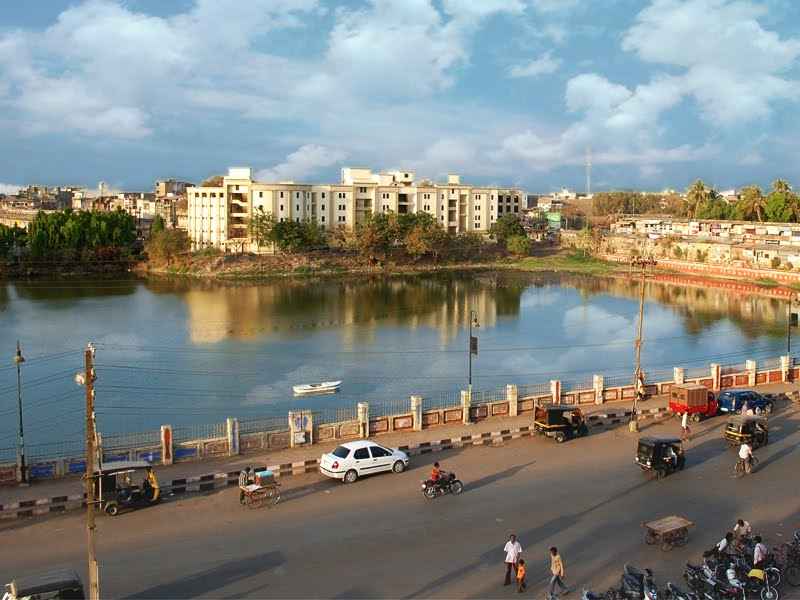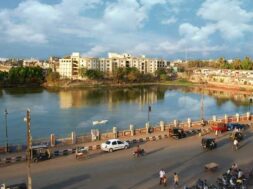
Bhavnagar: A city which was also known as Gohilwad in the history
During the pre-independence era, Bhavnagar was the main and the largest state in the region erstwhile known as Gohilwad.
Maharaja Bhavsinghji founded the state of Bhavnagar near Vadava village in 1743. As per the Hindu calendar, the day Bhavnagar was founded was a third of vaishakh.
The erstwhile princely states of Palitana and Vallabhipur are now a part of the district.
Maharaja Shree Krishnakumar Sinhji was the first king to merge his state with the union of India, at the behest of Shree Sardar Vallabhbhai Patel.
The Gohil Rajput of the Suryavanshi clan faced severe competition in Marwar. Around 1260 AD, they moved down to the Gujarat coast and established three capitals: Sejakpur (now Ranpur), Umrala, and Sihor.[2] Sejakpur was founded in 1194. In 1722–1723, the forces led by Khanthaji Kadani and Pilaji Gaekwad attempted to raid Sihor but were repelled by Maharajah Bhavsinhji Gohil. After the war, Bhavsinhji realized the reason for repeated attack was the location of Sihor. In 1723, he established a new capital near Vadva village, 20 km away from Sihor, and named it Bhavnagar after himself. It was a carefully chosen strategic location because of its potential for maritime trade. Naturally, Bhavnagar became the capital of Bhavnagar State. In 1807, Bhavnagar State became a British protectorate.
The old town of Bhavnagar was a fortified town with gates leading to other important regional towns. It remained a major port for almost two centuries, trading commodities with Mozambique, Zanzibar, Singapore, and the Persian Gulf. Bhavsinhji ensured that Bhavnagar benefited from the revenue that was brought in from maritime trade, which was monopolized by Surat and Cambay. As the castle of Surat was under the control of the Sidis of Janjira, Bhavsinhji brokered an agreement with them, giving the Sidis 1.25% of the revenue by Bhavnagar port. Bhavsinhji entered into a similar agreement with the British when they took over Surat in 1856.
Whilst Bhavsinhji was in power, Bhavnagar grew from a small chieftainship to a considerably important state. This was due to the addition of new territories as well as the income provided by maritime trade. Bhavsinhji’s successors continued to encourage maritime trade through Bhavnagar port, recognizing its importance to the state. The territory was further expanded by Bhavsinhji’s grandson, Vakhatsinhji Gohil, when he took possession of lands belonging to Kolis and Kathis, who obtained Rajula from the Navab Saheb Ahmad Khan, and merged Ghogha Taluka into the state.
In 1793, Vakhatsinhji conquered the forts of Chital and Talaja and later conquered Mahuva, Kundla, Trapaj, Umrala, and Botad. Bhavnagar remained the main port of the state, with Mahuva and Ghogha also becoming important ports. Because of the maritime trade, the state prospered compared to other states. During the late 19th century, the Bhavnagar State Railway was constructed. This made Bhavnagar the first state that was able to construct its railway system without any aid from the central government, which was mentioned in The Imperial Gazetteer of India.
Mr. Peile, a political agent, described the state as follows: “With flourishing finances and much good work in progress. Of financial matters I need say little; you have no debts, and your treasury is full.”[5] Between 1870 and 1878, the state was put under joint administration, due to the fact that Prince Takhtsinhji was a minor. This period produced some notable reforms in the areas of administration, revenue collection, judiciary, post and telegraph services, and economic policy. The ports were also modernized. The two people who were responsible for those reforms were E. H. Percival of the Bombay Civil Service and Gaurishankar Udayshankar Oza, Chief Minister of Bhavnagar State Bhavnagar Boroz.In 1911, HH Maharani Nundkanvarba of Bhavnagar was awarded the Order of the Crown of India, the highest Imperial award for women of the Empire. The former princely state of Bhavnagar was also known as Gohilwad, “Land of the Gohils” (the clan of the ruling family).













